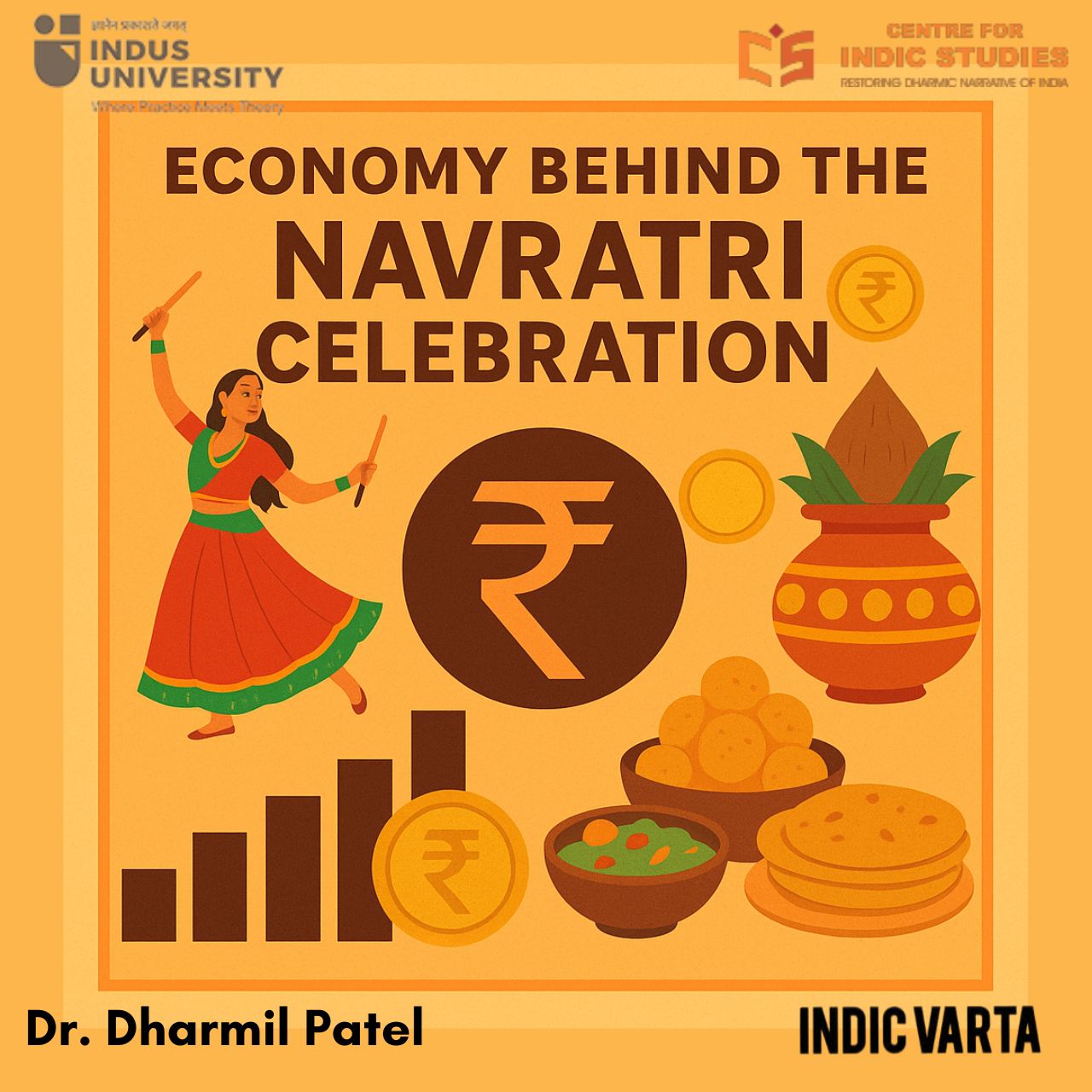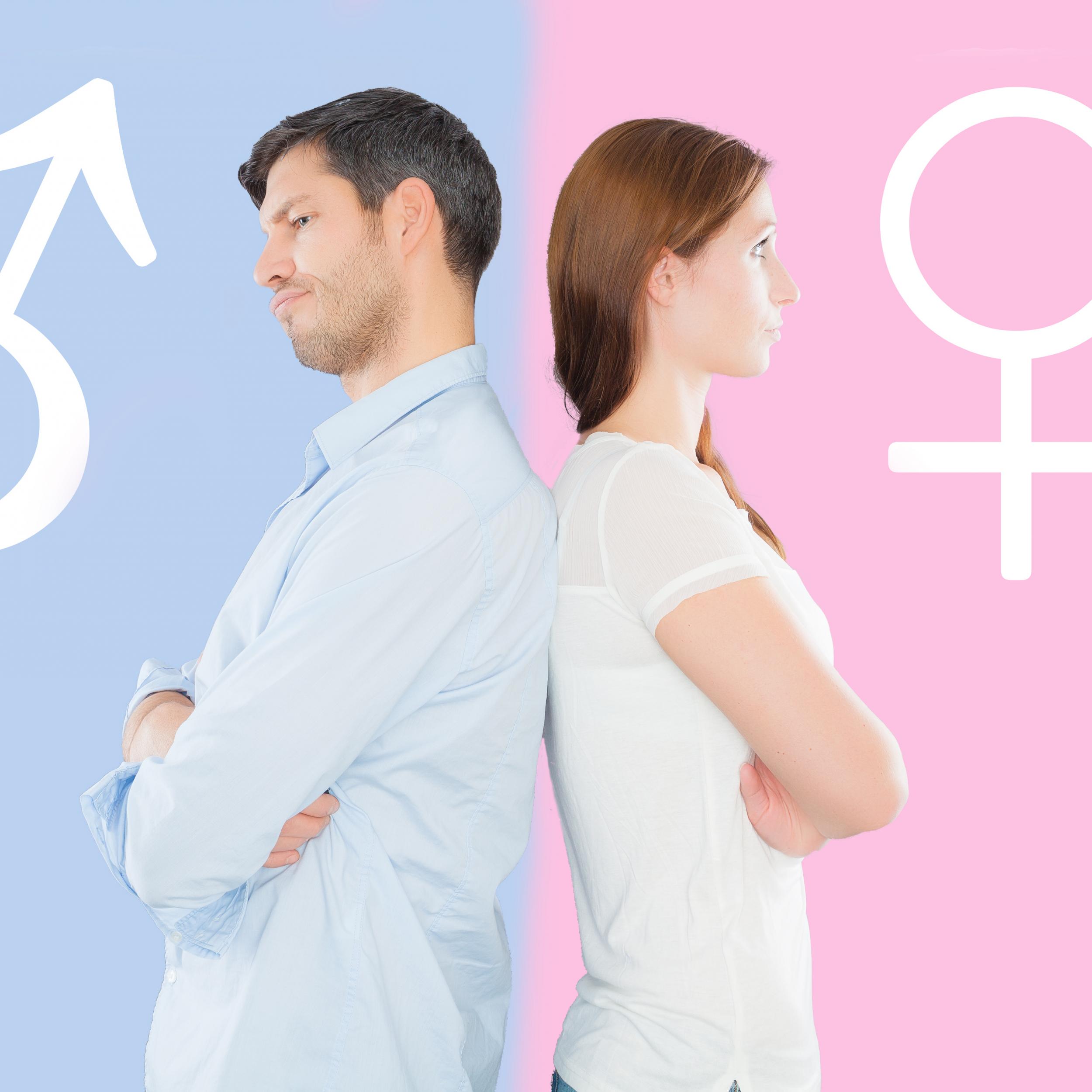- Visitor:34
- Published on: 2025-09-28 08:04 pm
The Economy Behind Navratri Festivals
‘Navratri’ festival is celebrated for nine days to worship the nine forms of the Goddess Durga (also called ‘Amba’ and ‘Bhavani’). Navratri begins on the first day of Ashwin lunar month with Ghatasthapana. Kalash, which is installed during Ghatasthapana, is immersed in the water body on the tenth day. It is celebrated with great enthusiasm with ‘Garba’ (a form of dance performed during Navratri).

Since ancient times, festivals have played a role that extends beyond cultural and religious traditions. They are among the biggest drivers of local economies. Navratri is more than just a spiritual or cultural celebration; it plays a critical role in driving economic growth. From boosting consumer spending to creating jobs and supporting local businesses, the festival is a powerful economic engine. As Navratri celebrations continue to grow in scale, so does their positive impact on various sectors of the economy, making the festival an essential part of India’s annual economic cycle.
Navratri encourages a fresh start, prompting individuals to review their financial goals and make informed investment decisions. This makes it an ideal time to reassess portfolios for better wealth creation. The festival creates opportunities for small-scale businesses and artisans who produce traditional items like ethnic wear, jewelry, and handicrafts. Navratri celebrations, particularly in regions famous for events like Garba and Dandiya, attract both domestic and international tourists, providing a substantial boost to the tourism and hospitality sectors.
Navratri brings wide scope for economic growth as it comes with a high volume of purchase of various things among people as they use them in Puja, in playing ‘Garba’, in Yagya etc. It attracts a huge purchase of clothes especially traditional clothes, shoes, aesthetic items, clay pots, things used in puja (Worship), coconut (Shreefal) etc. During Navratri, the transportation industry gets so many opportunities for business as people move to various places to take part in Garba, market places, their native places etc…, so, the auto rickshaw and cab owners and drivers find it as a very fruitful season. Party plots, community halls etc... get a good amount of earning through arranging Garba or training classes for Garba in their properties. Many people who are in the field of playing various musical instruments, singing, Garba-performance training etc... get good earning opportunities during Navratri. There is a trend to enjoy food after the completion of Garba or during the break-time in between Garba.
The business firms’ owners and the staff members who are engaged in the hospitality sector (hotels / restaurants/ catering services) find the Navratri festival a very useful duration for their economic growth. The logistics industry plays a very important role in moving things during Navratri, so, the people who are associated with the logistics industry also get good profit / income.
Navratri: The Economic Boost:
Navratri isn’t just a vibrant cultural celebration but it has a significant economic impact, especially for Micro, Small, and Medium Enterprises (MSMEs). This festive season drives higher consumer spending, benefiting various industries and contributing to the overall economic growth. As MSMEs form the backbone of India’s economy, Navratri provides them with a golden opportunity to capitalize on increased demand. Here's how Navratri affects the economy through the lens of MSMEs:
Boost in Consumer Spending:
During Navratri, consumer demand spikes for clothing, food, decorations, and gifts. MSMEs, particularly in sectors like apparel, handicrafts, and food, see higher sales, driving local economies and circulating more money. The surge in consumer spending raises GDP and benefits both small artisans and larger retailers, creating a positive ripple effect.
Job Creation and Seasonal Employment:
To meet festive demand, MSMEs hire more workers, leading to a rise in seasonal employment in manufacturing, logistics, and retail. This supports local families and boosts income levels in communities. Seasonal jobs help bridge employment gaps, increasing household incomes and promoting financial inclusion, particularly in rural areas.
Increase in Digital Transactions:
As more MSMEs adopt digital payment platforms, Navratri accelerates cashless transactions. UPI, digital wallets, and banking apps see a rise in use, formalising small businesses. Increased digital transactions reduce reliance on cash, promote financial transparency, and help MSMEs access credit and financial services.
Expansion of Regional Economies:
Navratri’s cultural roots boost demand for region-specific products like Garba outfits and handicrafts. MSMEs tap into local markets, promoting traditional crafts and regional growth. Supporting local MSMEs preserves traditional crafts, strengthens rural economies, and expands their reach to national and global markets. According to The Economic Times, the Confederation of All India Traders (CAIT) estimated that in 2024, Navratri celebrations — featuring events like Ramlila, Garba, and Dandiya — will generate business worth Rs 50,000 crore across the country.
Various Sectors and Their Economic Growth:
Navratri and Dashera are considered auspicious times to purchase new vehicles. Navratri celebrations in Gujarat and West Bengal attract both national and international tourists, providing a substantial boost to local tourism and hospitality industries. Vadodara in Gujarat and Kolkata in West Bengal become major hubs for religious tourism during this period, driving demand for accommodation, guided tours, and local experiences, thereby contributing significantly to the local economy.
In 2023, India’s festive season spending was estimated to grow by 15-20%, benefiting sectors like consumer goods and automobiles. Investors can capitalize on this trend by targeting sectors that see demand spikes. Navratri, in addition to celebrating divinity, can also serve as a journey of introspection for investors.
Many businesses choose Navratri to launch new products or services, which can influence stock market dynamics. This creates unique opportunities for investors to buy into growth at early stages. New product launches and IPOs during this period tend to generate significant market buzz, leading to increased demand for shares. Investors can take advantage of these growth opportunities, especially when companies launch IPOs with promising long-term potential.
Starting or increasing SIP (Systematic Investment Plans) contributions during Navratri ensures disciplined investments in mutual funds. SIPs allow for wealth accumulation over time, benefiting from rupee cost averaging and compounding returns.
Tax-Saving Opportunities:
Navratri is often considered a good time to plan tax-saving investments, such as ELSS, PPF, or other schemes, as individuals prepare for the end of the financial year.
Strategically investing in tax-saving instruments during this period allows investors to benefit from long-term wealth creation while optimizing tax liabilities. These investments not only secure future returns but also ensure that tax-saving benefits are maximized.
Market Performance Insights:
Navratri typically coincides with strong market performance in various sectors, offering better entry points for new investments. Investors often track trends to align their strategies for higher returns. Festivals, including Navratri, often boost market sentiment, pushing indices upward. In 2022, Nifty50 gained around 3% during the festive season, providing investors an opportunity to invest when market sentiment was high, especially in sectors like auto, real estate and banking.
Markets Perform During Navratri:
Historically, the markets have shown positive performance during Navratri, driven by increased investor confidence and festive spending. In 2021, the Nifty50 saw a return of around 3.98%, followed by a 1.22% rise in 2022. While 2023 faced some challenges, there were still opportunities for strategic investors.
In 2021, the market grew strongly, with Nifty50 rising by 3.98%. This was due to businesses reopening after the pandemic and higher investor confidence in sectors like auto, banking and technology. The festive season also contributed to this positive market movement, with strong earnings reports helping investors find good returns during this period.
In 2022, despite inflation concerns, the market still delivered a positive return of 1.22% during Navratri. Key sectors like automobiles and consumer goods benefited from festive spending. Though the returns were not as high as the previous year, the market showed strength and resilience, giving investors good opportunities for steady growth.
In 2023, the market faced difficulties due to geopolitical issues, resulting in a negative return. However, for long-term investors, the market dips during this time provided a chance to invest in strong companies at lower prices. Navratri still proved to be a valuable time for planning wealth-building strategies, focusing on future gains even in challenging times.
As per the data in October 2024, the celebrations of Durga Puja, Navratri, and Ramleela have not only strengthened India's cultural traditions but also significantly boosted the nation’s economy. According to the Confederation of All India Traders (CAIT), these festivals generated an estimated Rs. 50,000 crores in trade, creating vast employment opportunities for artisans, craftsmen, and various workers.
The employment generated through these events serves as a crucial support system for millions of workers in labor-intensive industries.
Navratri is not just a festival – it’s the beginning of India’s busiest consumption season. From automobiles to appliances, fashion to real estate, families wait for this period to make big-ticket purchases. Navratri sparks a chain of festivals – Durga Puja, Dashera, Diwali, wedding season, Christmas, and New Year – driving nearly half of India’s annual retail sales in just six months. For businesses, this is the time when sentiment meets spending power.
References:
1.https://www.drikpanchang.com/navratri/info/navratri.html
2.https://www.corporateind.com/news/navratri-festive-season-sparks-rs-50000-crore-economic-surge-across-india
3.https://www.linkedin.com/pulse/navratri-festive-economic-boost-msmes-ynoif?trk=public_post
4.https://aliceblueonline.com/significance-of-wealth-creation-during-navratri/
5.https://tejimandi.com/blog/feature-articles/navratri-a-cultural-celebration-fueling-economic-growth
6.https://economictimes.indiatimes.com/markets/stocks/news/9-forms-of-wealth-wisdom-financial-lessons-from-navratris-navdurga/articleshow/124085740.cms?from=mdr
7.https://www.linkedin.com/posts/66tina_navratri-the-kickstart-of-indias-economic-activity-7375863982307540992-KWcY
- 17 min read
- 0
- 0










